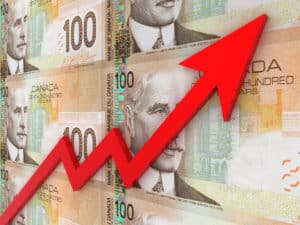Owning real estate investment trusts (REIT) as a portion of an income-producing portfolio has been viewed in recent years as the prudent thing to do. An investor can pick the REIT, which represents the markets and sectors they want to invest in, and they can access the cash flows of the real property without the analysis, management, and ultimate headaches of being a landlord. This sort of “passive landlord” thought process makes sense; one must wonder, however, what is the catch?
Catch #1: REITs are prone to macroeconomic risk
The theory behind REITs makes sense: they borrow money at corporate rates, invest it in income-producing real estate, and send the cash flows back to investors in the form of dividends. In a normal interest rate environment with a healthy jobs market and economy and little volatility in the real estate sector, REITs can outperform many other asset classes due to their stability of returns.
The stability of returns can get shaken very quickly, however, due to a sudden economic shock affecting any of the aforementioned variables. We saw as recently as 2007/2008 what can happen when a large shock hits the economy. REITs happen to be more exposed than other corporate entities and can be acutely affected by many macroeconomic shocks that other corporations may feel to a lesser extent.
Because of the nature of REITS generally being very highly levered, it can be easy to surmise what a “stress test” scenario would mean for many REITs with debt-to-equity ratios greater than one (for example, Dream Industrial REIT (TSX:DIR.UN) and Dream Global REIT (TSX:DRG.UN)). Should volatility pick up or some shock hit financial markets in the short term, we may see REITs feel the pressure accordingly.
Catch #2: Other high-income-yielding products now available on the market
As government bonds have begun to tick upwards following the recent U.S. election, we have seen a rise in short-term government bond yields, often referred to as the risk-free rate. As the risk-free rate has increased, the tide has risen accordingly, bringing all ships higher.
Bonds, corporate and otherwise, have seen prices drop and yields rise. Investors looking for safety of capital and a (more) reasonable yield can now take a fresh look at a bond sector that has, for quite some time, been rather disappointing.
REITs typically outperform in low-interest rate scenarios where REITs can borrow very cheaply and earn the spread on the principle payments of the company’s underlying lease agreements and the principle loan payments the REIT must make to its lender.
As the costs of borrowing rises for REITs, many stipulations, such as rental increase caps and other legislative ceilings that dictate how much REITs can raise rents, pose a profitability problem in the long run. This factor increases the interest rate risk of REITs relative to other comparable high-yielding, income-producing assets.
In short, take a look at the broader array of products available for income investing before making any investment decisions.
Stay Foolish, my friends.








